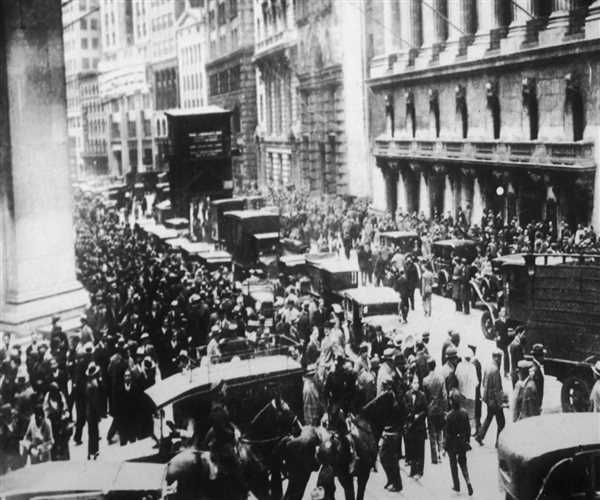The Great Depression of the 1930s was a period of great economic hardship for the United States and many other countries around the world. It marked the longest and most severe economic downturn in the history of the industrialized world.
So what events led to this economic collapse?

The primary cause of the Great Depression can be traced back to the stock market crash of 1929. On October 29th of that year, the Dow Jones Industrial Average dropped almost 25%, wiping out billions of dollars in market value. This was the result of a combination of forces, including speculation in stocks, over-production of goods, a decline in international trade, and a lack of diversification in investments.
The stock market crash highlighted the underlying weaknesses of the American economy. The Roaring Twenties had been a period of great economic growth, but that growth had been built on a shaky foundation. Many businesses had taken on too much debt, and many banks were overextended in their lending practices. The stock market crash triggered a chain reaction, leading to a collapse in the banking system as more and more banks failed and people lost their money.
The stock market crash also had a major impact on the global economy. It caused a decline in international trade and investment, further exacerbating the economic woes of the United States. Other countries, such as Germany and Japan, were already in the midst of economic decline before the crash, and the crash further worsened the situation.
The U.S. economy was also impacted by the effects of World War I. After the war, Europe was left with a large debt that it could not pay back. This led to a period of deflation, or a decrease in the value of money, which reduced purchasing power and hampered economic growth.
The U.S. economy was further weakened by the Smoot-Hawley Tariff of 1930. This act raised tariffs on imported goods, making it more difficult for foreign countries to purchase U.S.-made products. This led to retaliatory tariffs from other countries, further damaging the U.S. economy.
The economy was also weakened by the banking crisis of the early 1930s. Banks invested heavily in the stock market and were not prepared for the crash. They were forced to close when investors withdrew their deposits. This led to a chain reaction of bank failures that reduced the amount of available credit, causing a further slowdown in economic activity.
Finally, the Great Depression was worsened by the dust bowl, a period of severe drought in the Midwest and Great Plains region of the U.S. During this period, the combination of drought and wind caused the soil to become dry and dusty, leading to crop failure and agricultural collapse, further weakening the economy.
The Great Depression led to massive unemployment, with millions of people out of work. This led to a decrease in consumer demand, leading to a further decline in production and investment. The economic downturn was further exacerbated by the policies of the federal government. President Herbert Hoover was reluctant to intervene in the economy, and his successor Franklin Roosevelt was slow to implement the New Deal, which was a series of programs designed to stimulate the economy.
The Great Depression was a period of great hardship for the United States and much of the world. It was a result of a combination of events, including the stock market crash of 1929, the weak foundation of the American economy, and the failure of the federal government to implement effective policies to help the nation recover.